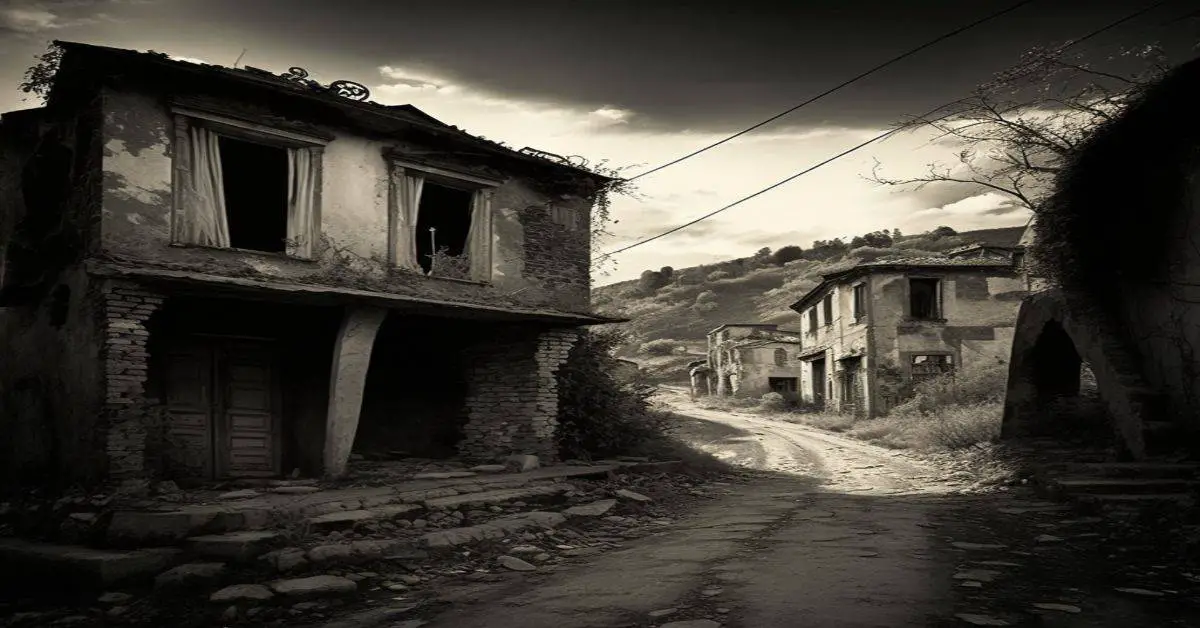Ghost towns are fascinating remnants of the past, often standing as eerie testaments to the passage of time and the ever-changing nature of human civilization. These abandoned places attract tourists, historians, and urban explorers alike, who seek to unravel the stories behind their decline and abandonment.
In this article, we delve into the largest ghost towns in the world, each with its own unique history and atmospheric allure.
Kangbashi, Ordos, China
A Futuristic Vision Turned Ghost Town
Kangbashi, also known as Ordos New Town, was once deemed the largest ghost town in the world. Located in the remote Inner Mongolia province of China, Kangbashi was envisioned as a futuristic city that would become a new epicenter of culture, economy, and politics. Built on one-sixth of China’s coal reserves, this ambitious project was designed to accommodate up to 1 million people, with massive abstract architecture projects, residential towers, and state-of-the-art sports venues.
The Rise and Fall of Kangbashi
In the early 2000s, a coal-mining boom led the local government to invest heavily in urban development. However, a combination of high property taxes, poor construction, and the proximity of the thriving “old city” of Ordos led to a failure in attracting residents. In 2016, only around 100,000 people lived and worked in Kangbashi, leaving the city two-thirds empty. The result was a surreal landscape of deserted streets and empty buildings that resembled a post-apocalyptic space station.
A Ghost Town Revived?
In recent years, efforts have been made to revive Kangbashi and attract new residents. Government offices, high schools, and farmers have been relocated to the area, boosting the population. Despite these efforts, Kangbashi still remains a mystery to many, and its status as a former ghost town makes it an intriguing destination for those seeking to explore the largest ghost towns in the world.
Varosha, Cyprus
A Tourism Paradise Lost
Varosha, located in the beautiful Mediterranean island of Cyprus, was once a thriving tourist destination. Between 1970 and 1974, it attracted celebrities like Elizabeth Taylor, Richard Burton, Raquel Welch, and Brigitte Bardot. The city’s golden beaches, luxury hotels, and vibrant nightlife made it one of the most popular tourist destinations in the world.
The Fall of Varosha
In 1974, the Turkish invasion of Cyprus led to the mass evacuation of Varosha’s residents, who fled in fear of a massacre. The Turkish military cordoned off the town and has remained abandoned ever since. Today, Varosha stands as a desolate town of decaying buildings, serving as a haunting reminder of its past glory.
Craco, Italy
A Medieval City with a Dark Past
Craco, a centuries-old hilltop town in southern Italy, was once a bustling city known for its rich history and picturesque location. However, its dark past, marked by plagues, famine, and political unrest, eventually led to its abandonment.
The Abandonment of Craco
In 1963, due to natural disasters and safety concerns, Craco’s remaining 1,800 residents were evacuated. The town now lies in ruins, with its crumbling buildings and empty streets serving as a backdrop for movie scenes and a popular destination for tourists seeking a glimpse into Italy’s past.
Pripyat, Ukraine
A City Forever Changed by Nuclear Disaster
Pripyat, a once-thriving city located only a few kilometers from the infamous Chernobyl nuclear power plant, was home to nearly 50,000 people before the 1986 disaster that changed everything. After the catastrophic explosion at the plant, Pripyat was evacuated within 36 hours, leaving behind a city frozen in time.
Visiting the Ghost City
Today, Pripyat is located within the Chernobyl Exclusion Zone, a restricted area surrounding the site of the disaster. Despite the lingering radiation, guided tours offer visitors a unique and haunting look at the remains of a once-vibrant city and a firsthand account of the world’s worst nuclear accident.
Hashima Island, Japan
An Island Built for Industry
Hashima Island, also known as Battleship Island, symbolized Japan’s rapid economic growth following World War II. The island was developed as a home for undersea coal miners, featuring high-rise buildings, public amusement areas, and modern facilities. However, when the coal mines closed in 1974, the island was abandoned, leaving a unique, decaying landscape behind.
A Tourist Attraction Reborn
Now, Hashima Island is a popular tourist attraction, with its crumbling concrete structures and eerie atmosphere drawing visitors worldwide. The island’s architecture and history testify to Japan’s industrial past and the ever-changing nature of human civilization.
Oradour-sur-Glane, France
A Village Forever Scarred by War
Oradour-sur-Glane, located in German-occupied France during World War II, was the site of a horrifying massacre in 1944. Nazi soldiers killed nearly 700 villagers, leaving the town in ruins as a chilling reminder of the atrocities committed during the war.
A Preserved Memorial
Today, Oradour-sur-Glane has been preserved as a memorial to the massacre’s victims. Visitors can walk through the village’s empty streets and crumbling buildings, taking in the chilling atmosphere and reflecting on the dark history.
Kayaköy, Turkey
A Peaceful Town Abandoned Following War
Kayaköy, once a bustling and peaceful town in southwestern Turkey, was primarily inhabited by Greek residents. However, following the Greco-Turkish War in the early 20th century, the town’s population was forcibly relocated, and Kayaköy was left to decay.
Echoes of the Past
Now overrun with overgrowth and weathered by time, the 350 abandoned homes in Kayaköy still hold memories of a peaceful past. The town has become a popular destination for tourists seeking a glimpse into a time gone by.
Plymouth, Montserrat
A Modern Evacuation
Plymouth, the former capital of the Caribbean island of Montserrat, became a ghost town in 1995 when the long-dormant Soufrière Hills volcano suddenly erupted. The devastating event forced the entire city’s population to evacuate, leaving behind a city buried in volcanic ash and debris.
Exploring the Ashen City
Today, Plymouth remains a restricted area due to the ongoing volcanic activity. However, guided tours are available, allowing visitors to witness the eerie remains of a city forever changed by nature’s fury.
Kolmanskop, Namibia
A Diamond Boomtown Turned Ghost Town
Kolmanskop, located in the Namib Desert of Namibia, was once a bustling diamond mining town in the early 20th century. However, when the diamond production ceased, the town was abandoned, leaving behind a fascinating mix of desert sands and decaying buildings.
A Deserted Destination
Now, visitors to Kolmanskop need a permit to explore the town’s empty streets and sand-filled houses. The unique combination of desert landscape and ghostly architecture makes it a must-visit destination for those seeking to explore the largest ghost towns in the world.
Ağdam, Azerbaijan
A City Left in Ruins
Ağdam, once home to nearly 40,000 people in Azerbaijan, now stands as an almost entirely uninhabited ghost town. The city was heavily damaged and mostly abandoned during the Nagorno-Karabakh conflict in the early 1990s, leaving behind a landscape of ruined buildings and desolation.
Exploring the Remains
Although the city remains mostly off-limits to visitors due to ongoing tensions, those who venture into Ağdam can witness the haunting remains of a once-thriving community, forever altered by the ravages of war.
In conclusion, the stories of these largest ghost towns in the world serve as powerful reminders of the impermanence of human civilization and the ever-changing nature of our world.
From the futuristic vision of Kangbashi to the tragic history of Oradour-sur-Glane, each town offers a unique and haunting experience for those who seek to explore the world’s abandoned places.



